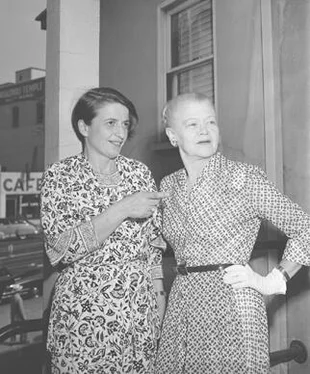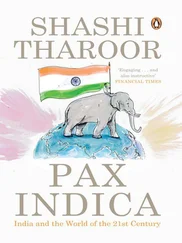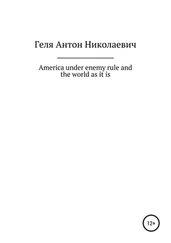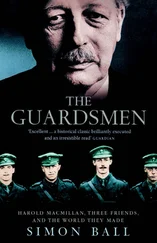Anne Heller - Ayn Rand and the World She Made
Здесь есть возможность читать онлайн «Anne Heller - Ayn Rand and the World She Made» весь текст электронной книги совершенно бесплатно (целиком полную версию без сокращений). В некоторых случаях можно слушать аудио, скачать через торрент в формате fb2 и присутствует краткое содержание. Жанр: Биографии и Мемуары, на английском языке. Описание произведения, (предисловие) а так же отзывы посетителей доступны на портале библиотеки ЛибКат.
- Название:Ayn Rand and the World She Made
- Автор:
- Жанр:
- Год:неизвестен
- ISBN:нет данных
- Рейтинг книги:5 / 5. Голосов: 1
-
Избранное:Добавить в избранное
- Отзывы:
-
Ваша оценка:
- 100
- 1
- 2
- 3
- 4
- 5
Ayn Rand and the World She Made: краткое содержание, описание и аннотация
Предлагаем к чтению аннотацию, описание, краткое содержание или предисловие (зависит от того, что написал сам автор книги «Ayn Rand and the World She Made»). Если вы не нашли необходимую информацию о книге — напишите в комментариях, мы постараемся отыскать её.
Ayn Rand and the World She Made — читать онлайн бесплатно полную книгу (весь текст) целиком
Ниже представлен текст книги, разбитый по страницам. Система сохранения места последней прочитанной страницы, позволяет с удобством читать онлайн бесплатно книгу «Ayn Rand and the World She Made», без необходимости каждый раз заново искать на чём Вы остановились. Поставьте закладку, и сможете в любой момент перейти на страницу, на которой закончили чтение.
Интервал:
Закладка:
Anna was also more broadly, and proudly, educated than her husband was. She read and spoke English, French, and German, and until the Belgian governess arrived she taught Rand and Natasha to read and write in French. Though Rand made good use of these advantages as she grew older, she viewed her mother as hypocritical and shallow, an opinion not entirely borne out by the evidence. She once characterized Anna as an aspiring member of the St. Petersburg intelligentsia whose main interest in life was giving parties, and she suspected that Anna enjoyed books and plays less than she enjoyed the appearance of talking about them at her frequent gatherings of family and friends. Anna subscribed to foreign magazines, including children’s magazines, which Rand read and was strongly influenced by as she began to write her own early stories. Still, until the 1917 Revolution changed everything, Anna seems to have been an artistic social climber (though a remarkably intelligent and resourceful one, as we shall see) who wanted her daughters to rise in the city’s Jewish social hierarchy—a project for which Ayn Rand was particularly unsuited.
In We the Living , Rand’s autobiographical first novel, written when she was in her twenties, the heroine, Kira Argounova, views her mother as an unprincipled conformist. Rand’s childhood clashes with Anna were often focused on her refusal to play with other children and her solitary, even antisocial nature. But Anna seems to have had a cruel streak, too. She told her eldest daughter that she had never wanted children, that she looked after them only from a sense of duty, and pointed out how much she sacrificed for them. Once, she got angry and broke the leg of a doll that Rand was fond of. When Rand was five or so, she recalled, her mother came into the children’s playroom and found the floor littered with toys. She announced to Rand and Rand’s two-and-a-half-year-old sister, Natasha, that they would have to choose some of their toys to put away and some to keep and play with now; in a year, she told them, they could trade the toys they had kept for those they had put away. Natasha held on to the toys she liked best, but Rand, imagining the pleasure she would get from having her favorite toys returned to her later, handed over her best-loved playthings, including a painted mechanical wind-up chicken she could describe vividly fifty years later. When the time came to make the swap and Rand asked for her toys back, her mother looked amused, Rand recalled. Anna explained that she had given everything to an orphanage, on the premise that if her daughters had really wanted their toys they wouldn’t have relinquished them in the first place. This may have been Rand’s first encounter with injustice masquerading as what she would later acidly call “altruism.” Her understanding of how power can be acquired by a pretense of loving kindness would grow only more acute with time.
Perhaps it’s little wonder, then, that from the age of four or five onward, Rand developed a keen sense that anything she liked had to be hers , not her mother’s, the family’s, or society’s, an attitude that readers of her 1943 novel The Fountainhead will recognize in the perverse and complicated character of Dominique Francon. As a corollary, she claimed not to care about being approved of or accepted by her family and peers. Since she generally wasn’t accepted, the proud, intelligent child appears to have learned early to make a virtue of necessity. In her twenties and thirties, she would construct a universe of moral principles built largely on the scaffolding of some of these defensive childhood virtues.
One of the things Rand claimed fiercely as her own was a certain kind of turn-of-the-century music heard in popular theaters and park bandstands, music that included light Viennese waltzes, Western military marches, and “The Drinking Song” from Verdi’s La Traviata . She remembered pleading with her grandmother Kaplan to play this music on the grandmother’s brand-new Victrola, one of the first in St. Petersburg, Rand later said. Her mother and aunts disapproved of her musical taste, but this made the music all the more alluring. She would pick out songs at first hearing and immediately decide, That’s mine, or That’s not mine. For the rest of her life, in moments of happiness, she would dance around the room to period recordings of this music, which she called her “tiddlywink” music.
She also collected popular postcards of famous Western paintings that were sold in dry-goods stores. But she chose only the ones with human forms; she wouldn’t touch the landscapes or the still lifes. Some of these postcards were found after her death, along with newspaper clippings and sketches of clothes she liked, in a file folder marked “Pictures I Like.” “I always collected things,” she said, adding that her mother regularly complained about how much rubbish she acquired. Happily, her grandmother Kaplan “retaliated” against her mother’s complaints by buying Rand a chest of drawers in which to store her collections.
The great exception in her somewhat alienated childhood affections was her handsome father, Zinovy, known to the family as Z.Z. and to Rand as Zakharovich. Presenting him as Kira’s Uncle Vasili in We the Living , Rand noted his “thick hair, powerful body, [and] sunken eyes[,] like a fireplace of blazing coals.” Like Vasili, Zinovy was, for the most part, silent, but he was immensely proud of his accomplishments as a self-made businessman. He admired his eldest daughter’s proud spirit and original, razor-sharp mind. An avid reader of Russian literature, he encouraged her efforts to write her first stories and, later, her drive to craft a fiction of ideas.
Zinovy had once wanted to be a writer, too, but took the more practical, if difficult, route of getting a degree in pharmaceutical chemistry from the University of Warsaw in 1899. Warsaw, 120 miles east of Zinovy’s hometown of Brest-Litovsk in the Russian Pale, was popular with the Jewish residents of the region because it had a relatively lenient admissions policy for Jews. Since non-Christians couldn’t matriculate but were confined to being “listeners,” or auditors, however, Zinovy’s degree was a two-year certificate rather than a baccalaureate. Rand believed that he had chosen the field of chemistry because there had been an opening in that department for a Jew. Since he didn’t begin his course of study until age twenty-seven, it seems likely that his parents couldn’t afford to pay his tuition and that he worked and saved for years to pay his own way. Later, Rand recalled, he helped all but one of his eight brothers and sisters to get training in the medical trades and leave the Pale. Those who moved to St. Petersburg became physician’s assistants, dentists, midwives, and masseurs.
Zinovy’s father’s extended family were tradesmen and professionals in Brest. Exactly how his parents earned their living is not known, but they were probably medical practitioners, too, since, like Zinovy and his siblings, Zinovy’s paternal uncle Aron Rosenbaum and a number of Aron’s children were physicians, midwives, pharmacists, and dentists in and around Brest and in St. Petersburg. Anna’s family originally came from Brest, too, and dozens of her Kaplan relatives remained behind there. Factory owners, community leaders, and tradesmen, some lived or worked on the same streets where Rosenbaums lived and worked and would certainly have known and been known to Zinovy’s parents. Indeed, it is possible that Anna and Zinovy were engaged to be married before Zinovy reached St. Petersburg—that is, that Rand’s parents’ marriage was arranged. One clue: On Zinovy’s arrival in St. Petersburg in 1902, he immediately took a managerial job with Anna’s sister Dobrulia Konheim and her husband, Iezekiil. That a newly licensed pharmacist was hired not as an apprentice or assistant but as a manager suggests that his position was preferential and prearranged.
Читать дальшеИнтервал:
Закладка:
Похожие книги на «Ayn Rand and the World She Made»
Представляем Вашему вниманию похожие книги на «Ayn Rand and the World She Made» списком для выбора. Мы отобрали схожую по названию и смыслу литературу в надежде предоставить читателям больше вариантов отыскать новые, интересные, ещё непрочитанные произведения.
Обсуждение, отзывы о книге «Ayn Rand and the World She Made» и просто собственные мнения читателей. Оставьте ваши комментарии, напишите, что Вы думаете о произведении, его смысле или главных героях. Укажите что конкретно понравилось, а что нет, и почему Вы так считаете.












